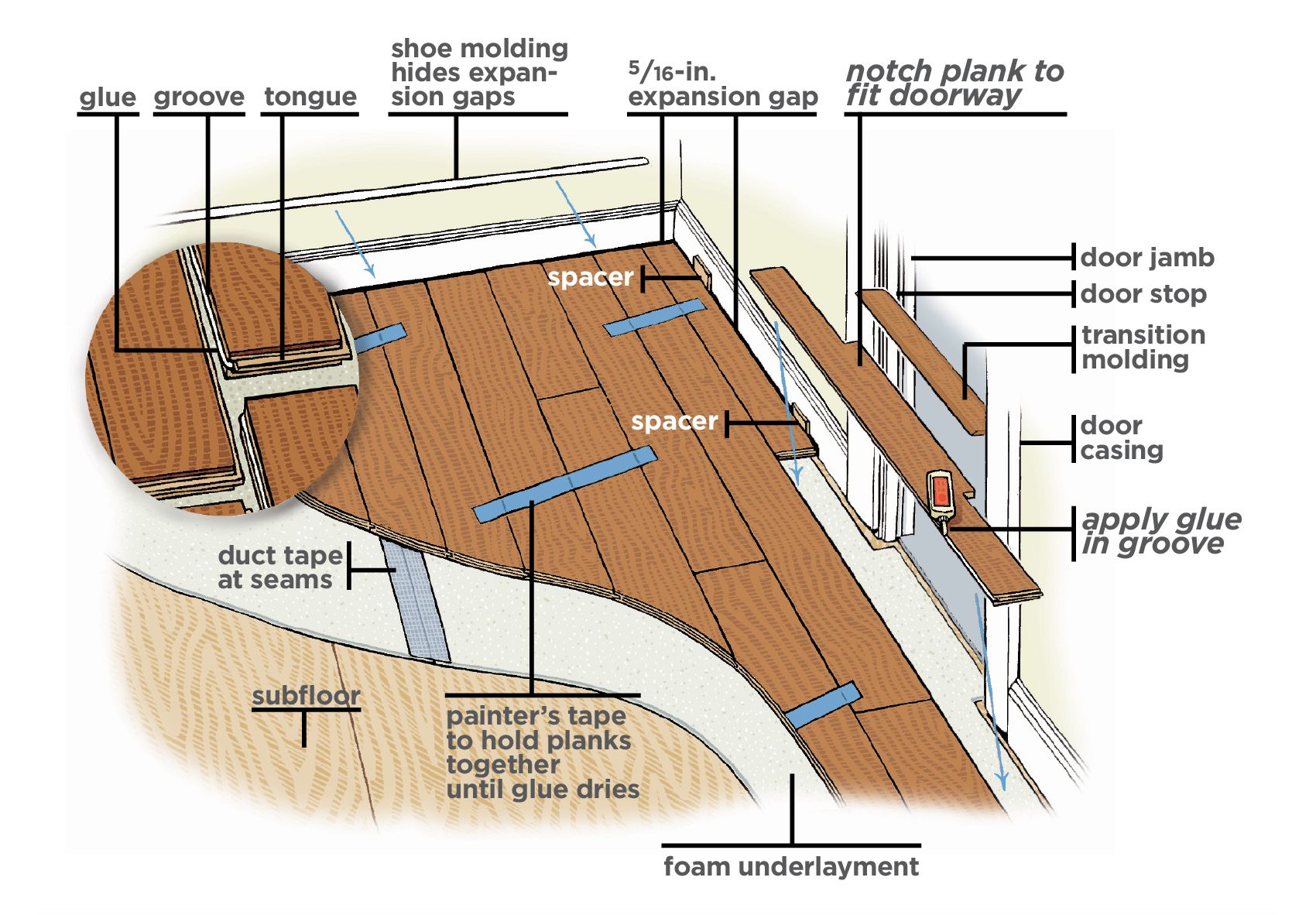Engineered Wood Flooring

Transforming your bathroom into a sanctuary of style and comfort is easier than you think, and engineered wood flooring can be the perfect solution. Engineered wood offers a beautiful, natural aesthetic while delivering the durability and moisture resistance needed to withstand the unique demands of a bathroom environment.
Engineered Wood Flooring: Advantages for Bathrooms
Engineered wood flooring offers a unique blend of beauty and practicality, making it an excellent choice for bathrooms. Unlike solid hardwood, engineered wood is constructed with multiple layers, with a top layer of real wood veneer and a core of plywood or other stable materials. This construction provides several advantages:
- Moisture Resistance: The multi-layered construction makes engineered wood more resistant to moisture than solid hardwood. The core layer acts as a barrier, preventing moisture from penetrating and warping the wood.
- Durability: Engineered wood is known for its durability, making it ideal for high-traffic areas like bathrooms. The stable core layer provides strength and resistance to scratches, dents, and wear.
- Aesthetic Appeal: Engineered wood flooring offers a wide range of wood species, colors, and finishes, allowing you to create a bathroom that reflects your personal style. You can choose from classic oak to exotic hardwoods, and even opt for distressed or weathered finishes for a unique look.
Comparing Engineered Wood Flooring to Other Bathroom Flooring Options
While engineered wood flooring stands out as a bathroom-friendly option, it’s essential to compare it to other popular choices:
- Ceramic Tile: Ceramic tile is a classic bathroom flooring choice known for its durability and moisture resistance. However, it can be cold underfoot and can be prone to cracking or chipping if not installed properly.
- Vinyl: Vinyl flooring offers a budget-friendly alternative with excellent moisture resistance and durability. However, it may not have the same aesthetic appeal as engineered wood and can feel less natural underfoot.
- Laminate: Laminate flooring provides a cost-effective option with a wide range of styles, but it is not as durable as engineered wood and may not be as moisture-resistant.
Engineered Wood Flooring Styles for Bathrooms
When choosing engineered wood flooring for your bathroom, consider styles that are well-suited for the environment:
- Hardwood Species: Oak, maple, and hickory are known for their durability and moisture resistance, making them excellent choices for bathrooms. They also offer a wide range of colors and finishes.
- Finishes: Consider finishes that are water-resistant and easy to clean, such as polyurethane or oil-based finishes. These finishes create a protective barrier that helps prevent moisture damage.
- Wide Plank: Wide plank engineered wood flooring can create a spacious and elegant look in a bathroom. The wider planks can help to minimize the appearance of grout lines, giving the floor a more seamless and luxurious feel.
Maintaining Engineered Wood Flooring in Bathrooms: Engineered Wood Flooring Bathroom

Engineered wood flooring in bathrooms requires special care due to the constant exposure to moisture. Proper maintenance is essential to preserve its beauty and longevity. This guide will provide you with the necessary knowledge to keep your engineered wood flooring in top condition.
Cleaning Techniques
Regular cleaning is crucial for preventing dirt, grime, and debris from accumulating, which can damage the flooring over time.
- Sweep or vacuum regularly: Remove loose dirt and dust using a soft-bristled broom or a vacuum cleaner with a brush attachment. Avoid using attachments with beater bars, as they can scratch the surface.
- Damp mop: Use a damp mop with a mild cleaning solution specifically designed for engineered wood flooring. Avoid using harsh chemicals or excessive water, which can damage the finish.
- Spot clean spills immediately: Quickly wipe up any spills or splashes to prevent staining or water damage. Blot the area with a clean cloth or paper towel, and avoid rubbing the stain.
Stain Removal Methods
Stains can occur due to spills or prolonged exposure to moisture.
- Mild soap and water: For most stains, a mixture of mild dish soap and warm water should suffice. Apply the solution to a soft cloth and gently rub the stain. Rinse the area thoroughly with clean water and dry completely.
- Specialized cleaners: For stubborn stains, consider using a cleaner specifically designed for engineered wood flooring. Follow the manufacturer’s instructions carefully.
- Avoid harsh chemicals: Avoid using abrasive cleaners, bleach, or ammonia-based products, as they can damage the finish and discolor the wood.
Routine Maintenance Procedures
Routine maintenance is key to preserving the beauty and longevity of your engineered wood flooring.
- Regular inspections: Regularly inspect the flooring for any signs of water damage, such as warping, buckling, or discoloration. Address any issues promptly to prevent further damage.
- Re-seal the finish: Depending on the type of finish and the level of wear and tear, you may need to re-seal the flooring every few years. This will help protect the wood from moisture and stains.
- Use floor mats: Place floor mats at entryways and near sinks to prevent dirt and moisture from being tracked onto the flooring.
Products for Cleaning and Protecting Engineered Wood Flooring, Engineered wood flooring bathroom
Several products are specifically designed for cleaning and protecting engineered wood flooring in bathrooms.
- Cleaning solutions: Look for cleaning solutions that are pH-neutral and specifically formulated for engineered wood flooring. Avoid harsh chemicals or abrasive cleaners.
- Sealing products: Use a sealant specifically designed for engineered wood flooring to protect it from moisture and stains. Choose a sealant that is compatible with the existing finish.
- Floor mats: Select floor mats that are absorbent and non-slip to prevent water damage and accidents. Choose mats made from materials that are easy to clean.
